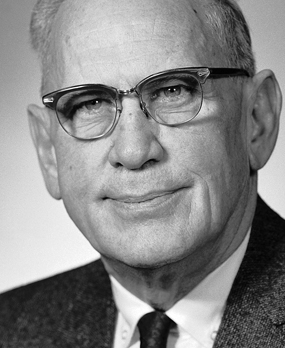How has he transformed the scene?
Born in St. Paul, Minnesota in 1899, Richard Gurley Drew was 22 years old and a banjo player in the local “Athletic Orchestra” when he applied for a job he saw posted in the newspaper. The Minnesota Mining and Manufacturing Company—a modest locally based manufacturer of sandpaper— was looking for a lab technician. In his letter of application, young Drew noted his banjo playing, his year as a Mechanical Engineering student at the University of Minnesota, the correspondence school course he was taking in machine design, and his experience driving a tractor. He was hired.
“He created a greenhouse environment, a skunkworks, where we could do anything, try anything. When you’re an oddball in a permissive environment, very often things turn out well.”
Paul Hanson, retired 3M technical director, (in) A Century of Innovation – The 3M Story
A few years later, while testing sandpaper samples at an auto body shop, Drew noticed the painters’ struggles with the plaster tape they were using. He left the shop with an idea for an alternative. He was at first encouraged—then discouraged—by 3M management when repeated trials in the lab were unsuccessful. Still, he persevered through such design challenges as premature drying of the adhesive in storage (solved by use of a rubber base) and flexibility of the backing material (solved by use of a crimped, towel-type paper). A paramount issue was the degree of adherence: it had to be strong enough to hold, easy enough to remove, and not fuse to itself when rolled. One by one, Drew found solutions.
His resulting invention would take the world by storm. Drew engineered the first paper backed, pressure-sensitive tape—Scotch masking tape—which hit the market in 1925. He followed up with a second breakthrough product released in 1930, transparent Scotch brand cellulose tape.
Practical and convenient, pressure sensitive tapes soon found applications in homes, medical facilities, construction and business settings worldwide. The tape protected the Goodyear blimp from corrosion. It patched cracks in turkey eggs so that chicks could survive until hatching. It repaired everything from fingernails to lampshades to dollar bills. Drew’s products served as a classic example of American ingenuity and an opportunity for 3M to re-define itself as a major research and development company.
Over the next decades, Drew moved up in the ranks of the now burgeoning 3M. In 1943 he was given the opportunity to establish and direct the Products Fabrication Laboratory, or “Pro-Fab Lab.” Drew assembled a small team of creative minds (described by former 3M scientist Art Fry as “a bunch of misfits—people who wouldn’t fly in formation) and set up shop in an old dairy building in downtown St. Paul. Reportedly dubbed the “funny farm” by some in senior management, the lab was inventor’s heaven. Under Drew’s easy-going leadership, individuals on the team devised a host of new products with public benefit in mind, including reflective sheeting to improve visibility of road signs, breathable surgical tapes, face masks and respirators, including many products specifically supporting the war effort during WWII. His team also laid intellectual groundwork attributed to the future development of Post-it notes.
The lesson of Dick Drew was not lost on 3M management or the larger corporate community: give creative people a little elbow room, and unexpected (profoundly profitable) ideas can result. Drew is credited by many with 3M’s subsequent establishment of the “15% rule,” a workplace policy by which employees are encouraged to spend up to 15% of their paid time on projects of their own devising. Call it “creating a culture of innovation” or just call it dream time, it works.
By the time Drew retired after nearly 40 years with the company, 30 patents would carry his name as co-inventor or inventor. Even after retirement, he continued to serve as a consultant for 3M on new product development. Within the organization, he is lauded as an exceptional mentor who generously fostered the inventive spirit of others, with a particular appreciation for underdogs and the oddball ideas they bring to the table. His colleagues remember Drew’s remark: “What I really want is a creative person. You can always hire a Ph.D. to take care of the details.”
Richard Gurley Drew passed away in December of 1980, having earned his way into the history books though creative engineering (not to mention giving banjo players a good name).

